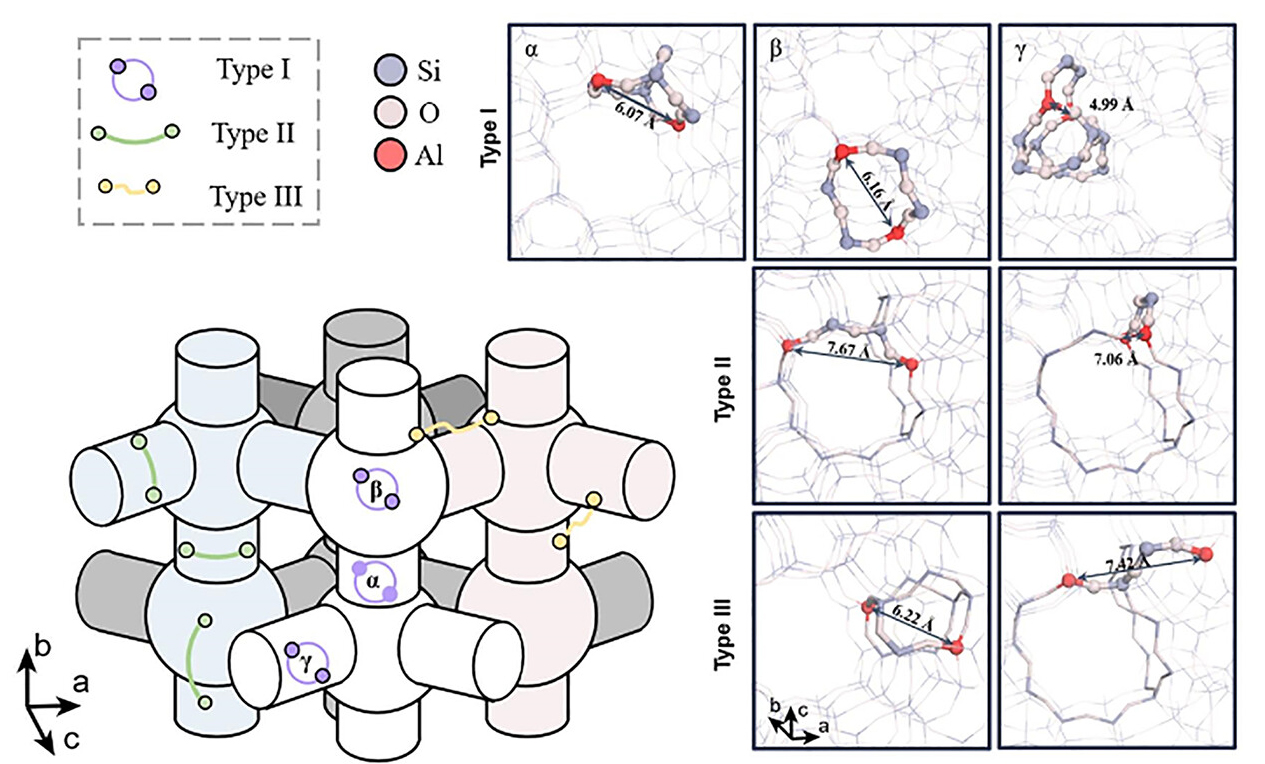The research team led by Prof. Guangjin Hou and Prof. Kuizhi Chen at the Dalian Institute of Chemical Physics (DICP), Chinese Academy of Sciences (CAS), has made new progress in the identification, quantification of aluminum pairs in zeolites, shedding light on their roles in the dealumination process.
Zeolites are widely used in industrial processes, and the distribution and positioning of framework aluminum pairs within have long been a focus of research. However, achieving high-resolution and quantitative characterization of these aluminum pairs has been a formidable challenge.

By employing divalent metal ion exchange techniques combined with advanced nuclear magnetic resonance (NMR) and internuclear distance measurement, the team successfully achieved precise quantitative analysis of paired and single-site aluminum atoms in zeolites. The researchers classified aluminum pairs into three categories and discovered that a high concentration of such pairs in zeolites triggers rapid dealumination. Notably, the study revealed that, during dealumination, the two aluminum atoms are dissociated sequentially rather than simultaneously.
This work provides new perspective on the catalytic properties of different types of zeolite aluminum pairs and opens avenues for the design and modification of catalysts.
The findings were recently published in the Journal of the American Chemical Society (JACS) and featured as an inside cover article.